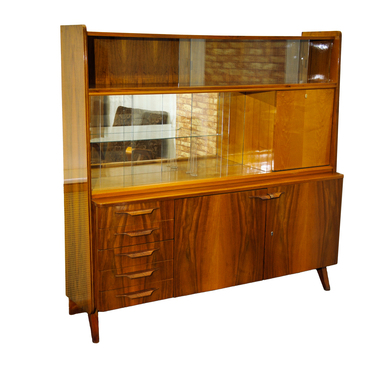The Soviet Union was the first to recognize the People’s Republic of China. This happened on October 2, 1949, the day after its establishment. The signing of the Sino-Soviet Treaty of Friendship, Alliance and Mutual Assistance marked the beginning of Soviet-Chinese relations. The USSR handed over to China the large maritime transport hub of Dalian and the Chinese Eastern Railway, helped in the construction of the state and the army, trained specialists.
The warming of relations and the post-war shortage of consumer goods in the USSR created the condition for trade agreements between the countries. From 1949 to 1956, Chinese household goods were brought to the Union — dishes, fabrics, and many others.
First, they were available to the Soviet nomenclature — party leaders, economic officials, employees of ministries and departments. In Moscow, Chinese goods were usually distributed through the order department, or the so-called 200th section of GUM (the main department store in many cities of the former Soviet Union), as well as through the special service store on Kutuzovsky Prospekt. In Leningrad and other major cities, these goods could be purchased through special stores and order departments attached to the regional party committee.
The senior military authority, military representatives, and heads of defense enterprises, as well as their family members, could buy scarce Chinese goods in the sections of the Voentorg trading network. In the 1960s, Chinese goods were already available only in commission stores, since on August 18, 1960, the USSR canceled trade agreements with the PRC.
Mikhail Kalashnikov and his second wife Yekaterina received a separate two-room apartment in Izhevsk in 1952. It was located on the third floor of the “House of Specialists” on Pushkinskaya Street. The house on the second line, parallel to the central street of the city, was part of the architectural ensemble of Stalin’s five-story buildings.
For a housewarming party, the Kalashnikovs bought a Czechoslovak furniture set in Leningrad, probably through the order department. The chairs to the rectangular dining table and the armchair from the set were upholstered in light brown tapestry with a floral print. The researchers suggest that Yekaterina Kalashnikova bought a Chinese tablecloth presented in the exhibition at the same time as the furniture set, the size, pattern and color of which were suitable for the new furniture.
Yekaterina’s favorite tablecloth was donated to the museum in 2019 by Nelly Vetsheva — Kalashnikova’s daughter from her first marriage.
The warming of relations and the post-war shortage of consumer goods in the USSR created the condition for trade agreements between the countries. From 1949 to 1956, Chinese household goods were brought to the Union — dishes, fabrics, and many others.
First, they were available to the Soviet nomenclature — party leaders, economic officials, employees of ministries and departments. In Moscow, Chinese goods were usually distributed through the order department, or the so-called 200th section of GUM (the main department store in many cities of the former Soviet Union), as well as through the special service store on Kutuzovsky Prospekt. In Leningrad and other major cities, these goods could be purchased through special stores and order departments attached to the regional party committee.
The senior military authority, military representatives, and heads of defense enterprises, as well as their family members, could buy scarce Chinese goods in the sections of the Voentorg trading network. In the 1960s, Chinese goods were already available only in commission stores, since on August 18, 1960, the USSR canceled trade agreements with the PRC.
Mikhail Kalashnikov and his second wife Yekaterina received a separate two-room apartment in Izhevsk in 1952. It was located on the third floor of the “House of Specialists” on Pushkinskaya Street. The house on the second line, parallel to the central street of the city, was part of the architectural ensemble of Stalin’s five-story buildings.
For a housewarming party, the Kalashnikovs bought a Czechoslovak furniture set in Leningrad, probably through the order department. The chairs to the rectangular dining table and the armchair from the set were upholstered in light brown tapestry with a floral print. The researchers suggest that Yekaterina Kalashnikova bought a Chinese tablecloth presented in the exhibition at the same time as the furniture set, the size, pattern and color of which were suitable for the new furniture.
Yekaterina’s favorite tablecloth was donated to the museum in 2019 by Nelly Vetsheva — Kalashnikova’s daughter from her first marriage.

